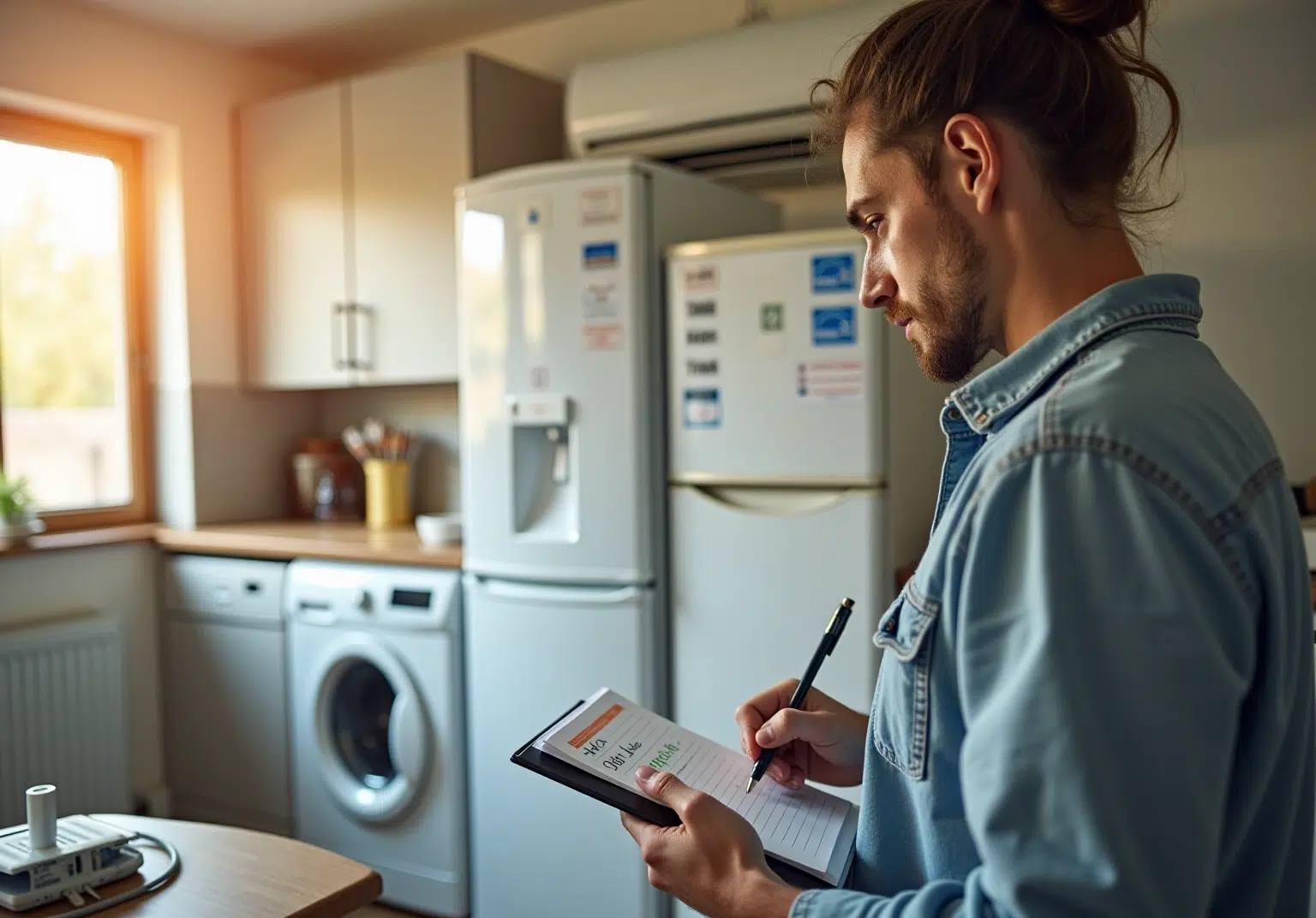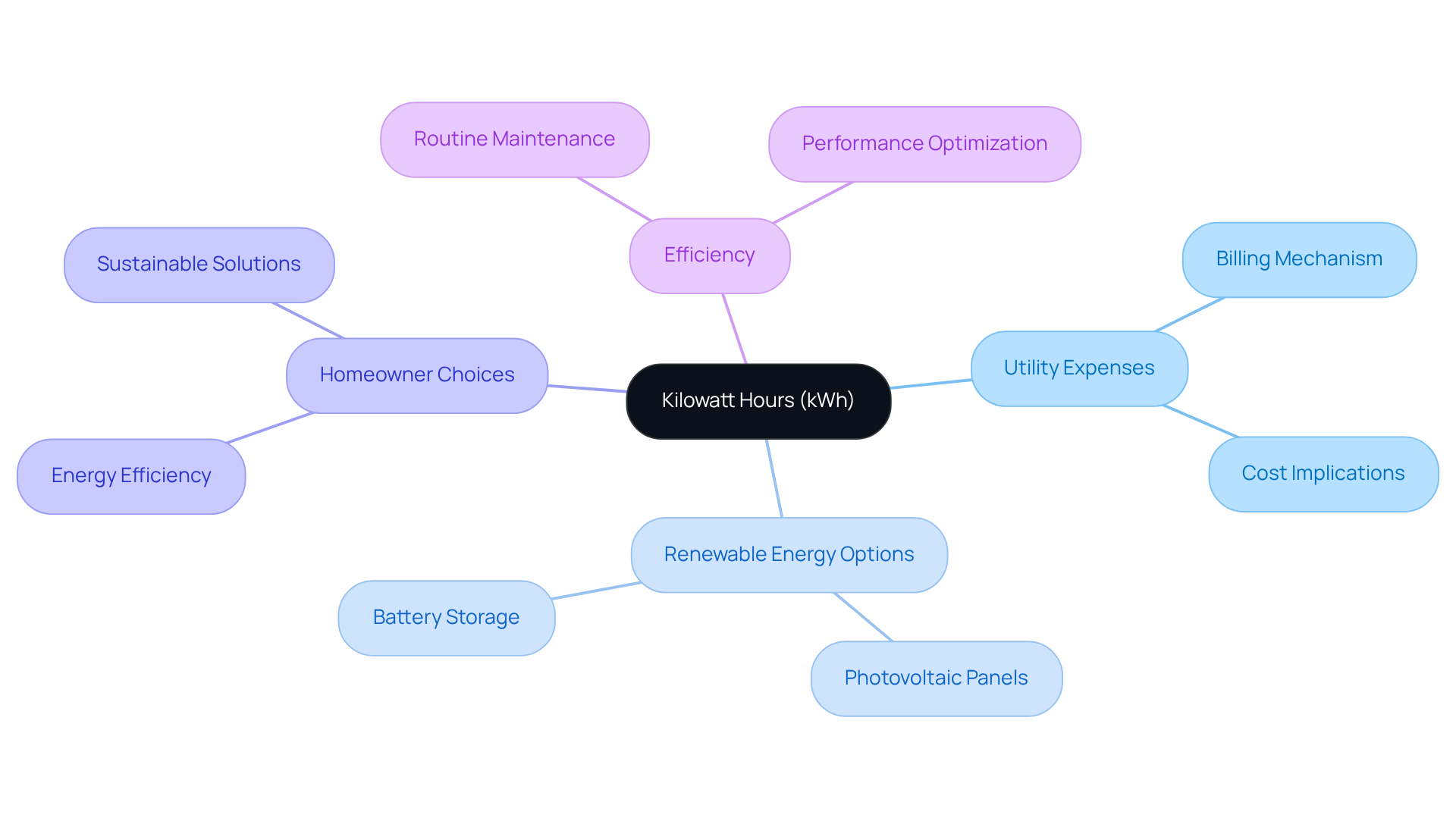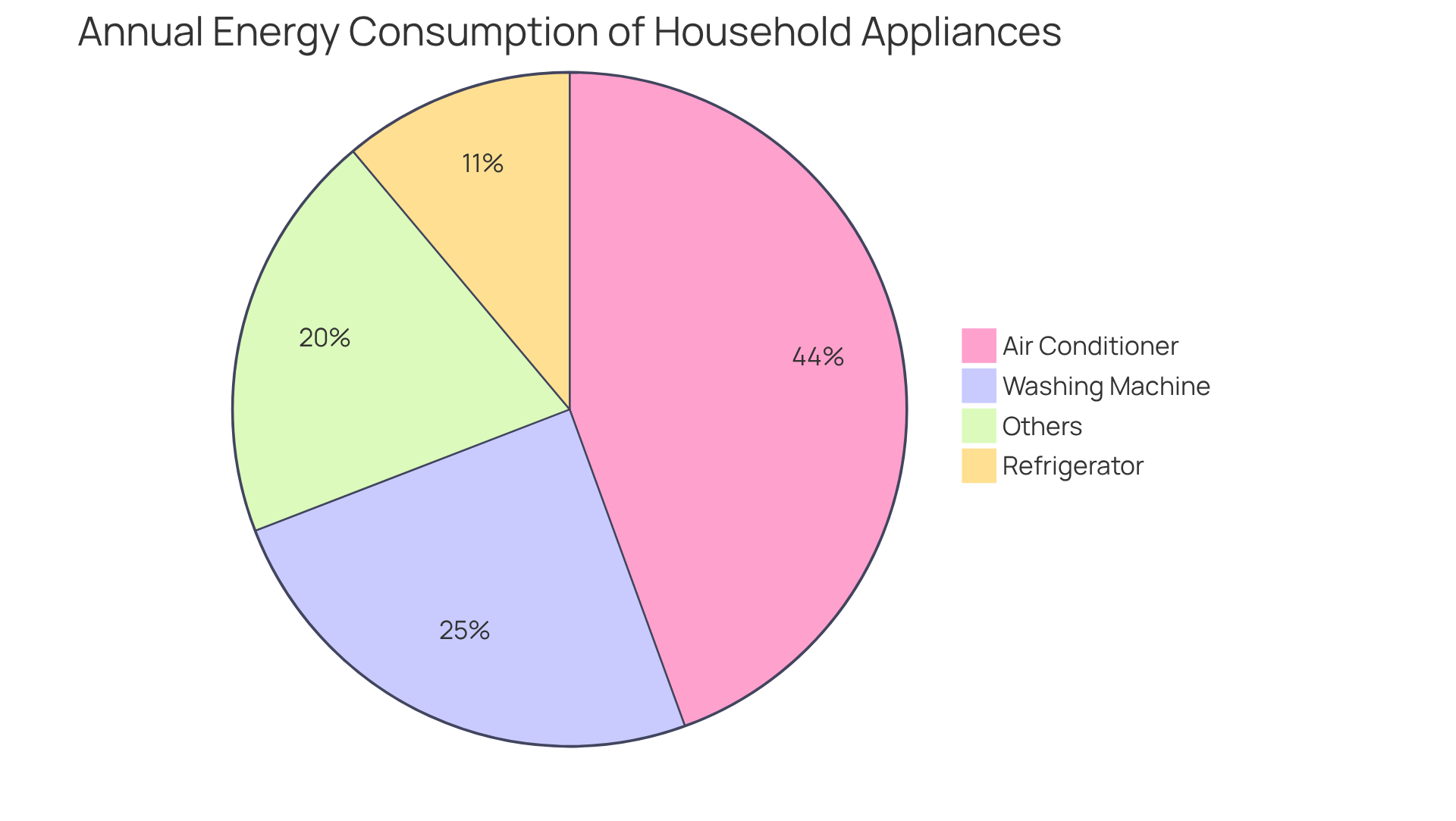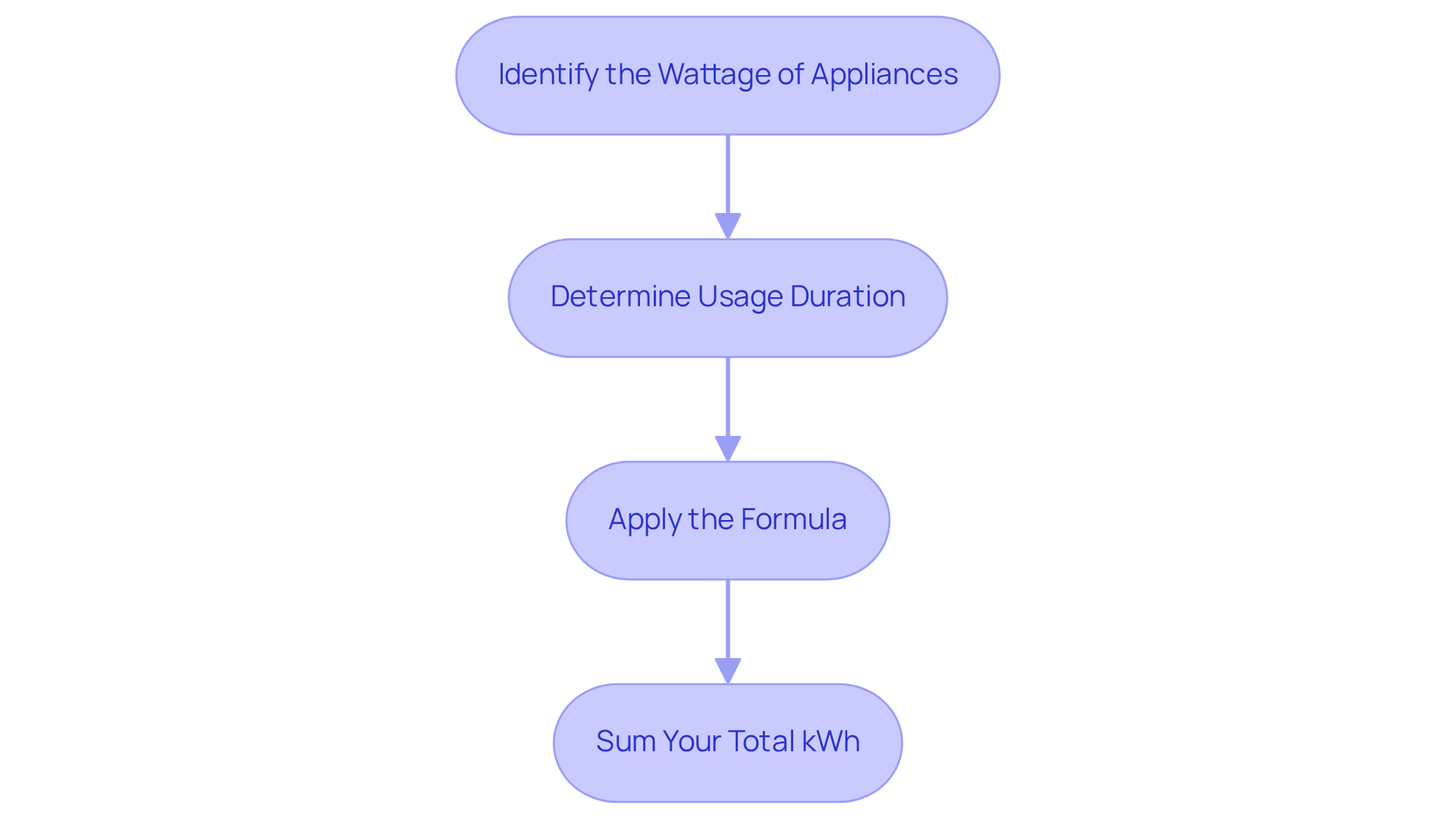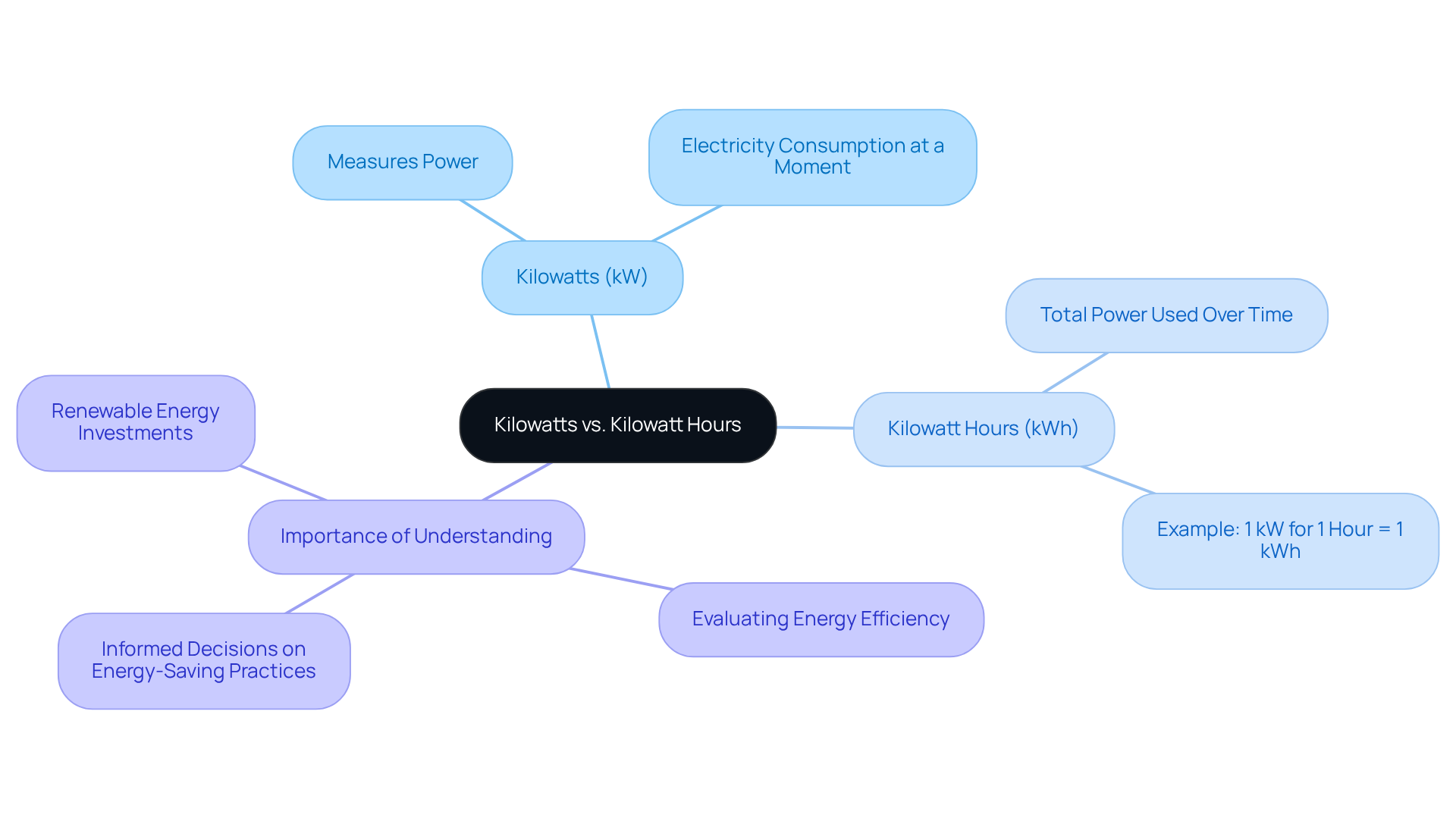Overview
This article highlights the importance of kilowatt hours (kWh) for homeowners, addressing the common concern of rising energy bills. Understanding this measurement can empower you to manage your energy consumption and costs effectively, especially if you’re considering renewable energy options. We understand that navigating these choices can feel overwhelming, but knowing how to calculate your kWh usage is a crucial first step.
By focusing on the efficiency of household appliances, you can significantly reduce your energy usage. Imagine the financial relief of lower bills and the positive impact on our environment by adopting renewable energy solutions. Together, we can explore how these options can lead to both ecological benefits and financial savings, fostering a sense of energy independence.
As you reflect on your energy practices, consider the potential for change. What if you could not only save money but also contribute to a healthier planet? By embracing renewable energy, you can make informed decisions that resonate with your values. Let’s work towards a more sustainable future together, where your energy choices reflect your commitment to both your home and the environment. If you’re ready to take the next step, we’re here to support and guide you on this journey.
Introduction
Understanding the intricacies of kilowatt hours (kWh) is essential for homeowners striving to manage their energy consumption effectively. We understand that rising utility bills can be a source of stress and concern. This measurement not only influences those bills but also plays a pivotal role in the decision-making process surrounding renewable energy solutions.
As households increasingly seek to lower expenses and embrace eco-friendly practices, the question arises: how can a deeper comprehension of kWh empower homeowners to optimize their energy use and contribute to a sustainable future?
Exploring this topic reveals practical insights that can transform energy management from a daunting task into an opportunity for savings and environmental stewardship. Together, we can navigate these complexities and work towards a brighter, more sustainable future.
Define Kilowatt Hours: Understanding the Basics
A kilowatt hour (kWh) is a measure of power that represents one kilowatt (1,000 watts) used for a duration of sixty minutes. This standard measurement is crucial for utility companies as they bill customers for electricity consumption. For example, if you operate a 1,000-watt appliance for one hour, you will use one kilowatt hour of power.
We understand that understanding kilowatt hours is essential for homeowners, particularly tenants in Long Beach who are contemplating renewable power options, as it directly influences utility expenses and potential savings. By tracking kWh usage, homeowners can make informed choices about their power consumption and identify opportunities for enhancing efficiency, especially when considering the incorporation of photovoltaic panels into their residences.
Understanding kilowatt hours is vital for eco-aware homeowners in Long Beach who are eager to utilize sustainable power solutions, as it helps them assess the financial and ecological advantages of heating systems, such as reduced utility expenses and smaller carbon footprints, along with battery alternatives for power storage and the importance of routine maintenance for optimal performance.
Together, we can explore these options to create a more sustainable and cost-effective energy future.
Explore Practical Applications of Kilowatt Hours in Daily Life
Homeowners can benefit from understanding kilowatt hours (kWh), as it plays a significant role in managing their power usage daily, especially for those contemplating eco-friendly options like solar power. We understand that navigating energy bills can be overwhelming. Common household devices, such as refrigerators, washing machines, and air conditioners, have specific kWh ratings that are important for understanding kilowatt hours and their power consumption. For instance, a standard refrigerator typically consumes between 100 to 800 kWh annually, accounting for approximately 13% of the total electricity consumption in the average American household. A washing machine can use between 500 to 1500 kWh per year, depending on the model and usage patterns. By understanding kilowatt hours, homeowners can make informed choices about appliance use and explore renewable power alternatives that can further reduce their carbon footprint.
To enhance power usage, consider operating appliances during off-peak hours, which can lead to substantial savings since electricity rates tend to be lower during these times. For example, running a washing machine at night can help lower expenses, particularly when efficient models can save between 10% to 50% on power usage compared to standard appliances. Furthermore, using renewable energy can significantly lessen dependence on grid electricity, providing both financial and ecological benefits. For instance, utilizing a 6000 BTU air conditioner for 8 hours incurs roughly $0.60 to $0.84 at typical rates; however, with renewable sources, these costs can be minimized, emphasizing the cost efficiency of incorporating such solutions into everyday life.
Homeowners can also enhance their understanding of kilowatt hours usage through utility bills, allowing them to identify consumption trends and adjust habits accordingly. Simple strategies, such as:
- Unplugging devices when not in use
- Using power strips
- Investing in ENERGY STAR-rated appliances—which can save 10-15% on average compared to standard models
can further reduce overall power consumption. By adopting these practices and considering renewable power alternatives, California homeowners can effectively manage their consumption, lower expenses, and contribute to a more sustainable future. Moreover, households struggling to cover utility bills often spend over 25% more on power compared to those who do not, highlighting the importance of efficiency and renewable solutions for financial savings. Together, we can work towards a greener, more sustainable lifestyle that not only benefits our wallets but also our planet.
Calculate Your Energy Consumption: Methods for Determining Kilowatt Hours
Understanding kilowatt hours is vital for managing your energy use and maximizing your investments in renewable resources. We recognize that energy bills can be a significant concern for many homeowners, and we want to help you navigate this important aspect of your household. Here’s how you can accurately assess your household’s energy consumption:
- Identify the wattage of your appliances: Locate the wattage label on each appliance. This information is crucial for your calculations, especially when considering the efficiency of panel systems and selecting the best battery options for power storage.
- Determine usage duration: Reflect on how many times each day you use each appliance. This will vary based on your daily routines and can significantly impact your solar energy requirements.
- Apply the formula: Multiply the wattage by the number of hours used, then divide by 1,000 to convert to kilowatt hours. For instance, if you have a 200-watt lamp that you use five times a day, the calculation would be (200 watts * 5 periods) / 1,000 = 1 kWh.
- Sum your total kWh: Add up the kWh for all appliances to determine your total daily consumption.
This method not only aids homeowners in tracking their energy consumption but also empowers them to make informed decisions regarding efficiency and potential renewable resource investments. As energy advisor Mike Williams emphasizes, understanding kilowatt hours is essential for optimizing the benefits of photovoltaic systems, which can help you manage rising costs and enhance your energy independence.
Moreover, with California sourcing nearly 40 percent of its electricity from solar energy as of March 11, understanding your power usage becomes even more crucial in fostering a sustainable future. For residents of Long Beach, embracing eco-friendly power options through solar technology can significantly contribute to both cost savings and environmental sustainability. Together, we can work towards a brighter, more sustainable future.
Clarify Common Misconceptions: Kilowatts vs. Kilowatt Hours
Many homeowners often find themselves confused between kilowatts (kW) and understanding kilowatt hours (kWh), and it’s completely understandable. These terms represent different concepts that are essential to grasp for effective energy management.
- A kilowatt measures power, indicating how much electricity is consumed at any given moment.
- In contrast, a kilowatt hour reflects the total power used over a specific period.
- For instance, if you operate a 1 kW device for one hour, it consumes 1 kWh of energy.
Understanding kilowatt hours is crucial for grasping this distinction, especially for those contemplating investments in renewable energy. It can significantly influence how you perceive your utility bills and manage your energy consumption.
By recognizing that kWh represents total usage over time, you can better evaluate your energy efficiency and make informed decisions about energy-saving practices and solar energy solutions, such as solar water heating systems. These systems not only promise long-term cost savings by reducing your utility expenses but also contribute to our shared goal of environmental sustainability by lowering greenhouse gas emissions. Together, we can work towards a brighter, more sustainable future.
Conclusion
Understanding kilowatt hours is essential for homeowners who are concerned about managing their energy consumption effectively and exploring renewable energy options. We recognize that energy bills can be overwhelming, and by grasping the concept of kWh, you can make informed decisions that not only reduce your utility bills but also contribute to a more sustainable environment. This knowledge empowers you to take control of your energy usage, leading to potential savings and a reduced carbon footprint.
Throughout this article, we highlighted several key insights. We clarified the distinction between kilowatts and kilowatt hours, emphasizing the importance of understanding total energy usage over time. Practical applications were discussed, showcasing how you can optimize your energy consumption through smart appliance use and renewable energy solutions. Moreover, we provided a straightforward method for calculating energy consumption, enabling you to track your usage and make necessary adjustments.
Ultimately, the pursuit of energy efficiency and sustainability is a collective responsibility. By embracing the insights shared in this article, you can take actionable steps towards reducing your energy consumption and exploring renewable energy options. This not only benefits your household but also contributes to a broader movement towards a greener future, where every kilowatt hour saved makes a difference for both your wallet and our planet. Together, we can create a more sustainable world.


